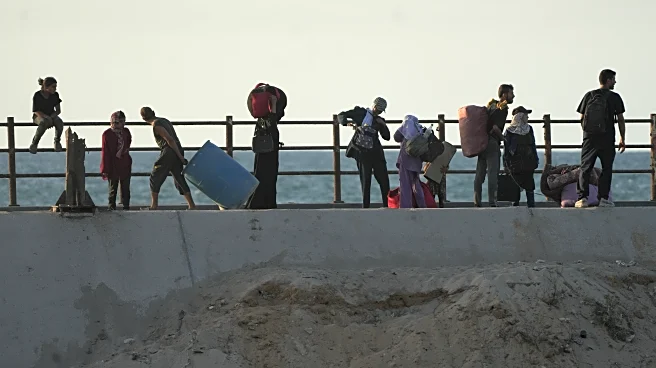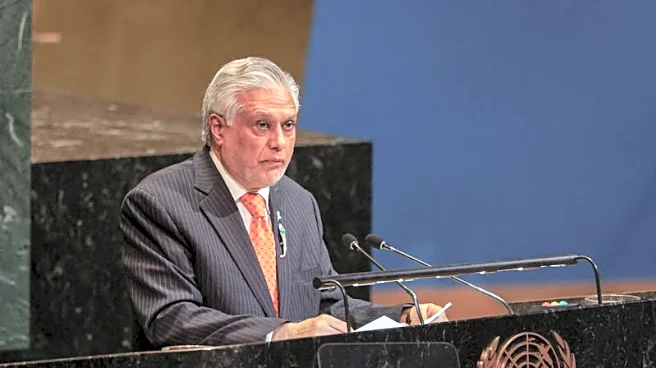What's Happening?
President Trump has unveiled a 20-point peace plan aimed at resolving the ongoing conflict between Israel and Hamas in the Gaza Strip. The plan includes an immediate cease-fire, the release of all hostages within 72 hours, and a phased withdrawal of Israeli forces. It also calls for the disarmament of Hamas and the establishment of a transitional government under international supervision. The plan has received mixed reactions, with some viewing it as a potential pathway to peace and others criticizing it as unrealistic.
Why It's Important?
The plan represents a significant diplomatic effort by the U.S. to address the longstanding conflict in Gaza. If successful, it could lead to a reduction in hostilities and pave the way for reconstruction efforts in the region. The involvement of an international Arab-Muslim force could also shift the balance of power in Gaza, potentially reducing the influence of Hamas. However, the plan's success hinges on the cooperation of multiple stakeholders, including Israel, Hamas, and various international actors.
What's Next?
Ceasefire negotiations are set to begin in Sharm el-Sheikh, with American envoys and mediators from Egypt and Qatar participating. The discussions will focus on the logistics of the hostage release and the establishment of a new governance structure in Gaza. The plan's implementation will require significant compromise from both Israel and Hamas, particularly regarding the release of prisoners and the demilitarization of the region.
Beyond the Headlines
The plan's emphasis on creating an Arab multinational force and a 'Board of Peace' chaired by President Trump highlights the broader geopolitical interests at play. The involvement of countries like Turkey, Qatar, and Egypt suggests a shift towards a more regional approach to peacekeeping in Gaza. Additionally, the plan's focus on reconstruction and humanitarian aid underscores the need for long-term stability and development in the region.












